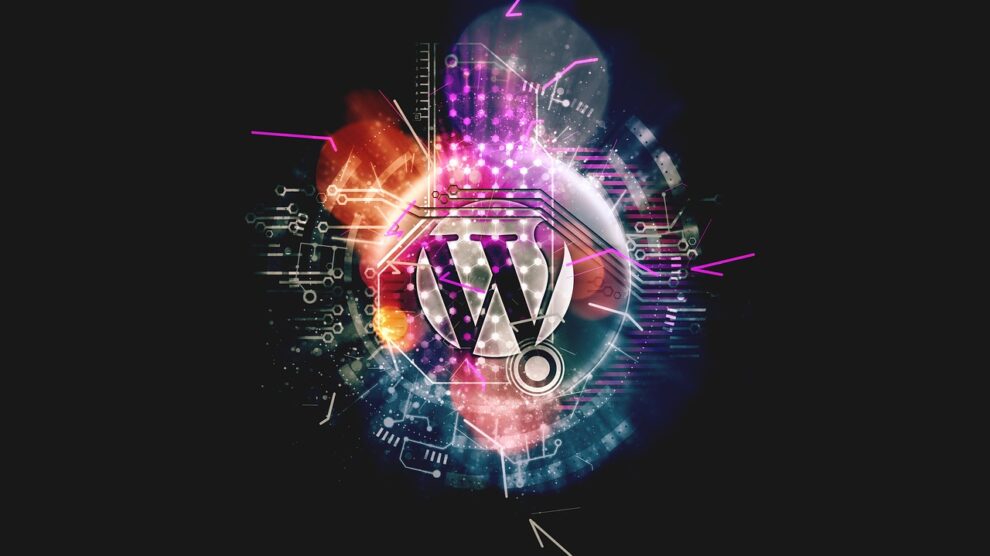WordPress is currently the most popular content management system (CMS) on the internet. Today, a huge number of sites on the web are powered by WordPress. The program first appeared in 2003 and provided users with the ability to create a website at will. Since that first release in 2003, the WordPress platform has come a long way – from a blogging tool to a complete content management system that can be used to create almost any type of website, from simple blogs to online portfolios for photographers and designers, full-fledged commercial sites selling real or digital goods, markets, auctions, catalogs, and corporate sites for large companies. Of course, the admin panel has features, and we will show you how to quickly figure it out here.
Console
The “Console” section consists of two pages: “Home” and “Updates”. Home – This overview page contains widgets that give you quick access to basic information and functions of your site, as well as a quick start guide. The Updates page displays information about available updates for WordPress core, plugins, themes, and translations. Also in this section, you can reinstall WordPress.
Recordings
In the “Posts” section, dynamic content is created, structured in time: news, articles, reviews, training materials, etc. Entries are displayed on the site in reverse chronological order (new ones first), and due to the presence of headings and tags, they can be grouped according to certain criteria. For example, recipes can be categorized by ingredients used, preparation time and complexity, and book reviews by genre and author.
Media Files and Pages
This is where documents, images, and videos are stored that were uploaded with administrator rights. The site owner can update the content, publish it or remove it from the site at any time. Pages are intended for posting static information: about the company, contacts, terms of service, etc. Pages are also suitable for forming hierarchical structures, for example, a service catalog.
Comments
The “Comments” section displays all comments made in posts and on-site pages. The owner can read user comments, enter into a dialogue with them, answer questions, mark them as spam, or delete them. A handy tool for keeping a page active or clean (however you wish).
Design
Design is a fairly extensive section of the admin panel. The key subsection is the “Customize” item. With it, you can configure the parameters of the active theme, menu, widgets, set additional CSS-styles, select the main page and activate another theme for the site from the list of installed ones.
The rest of the sub-items in one way or another duplicate the functions of the “Customize” item, but in some cases, they provide more opportunities. For example, in the “Themes” sub-item, you can not only activate another theme but also install a new one from the WordPress theme directory. Also in other paragraphs, there is a subsection “Editor”.
With it, you can modify theme files directly through the admin panel. It is very convenient because it allows you to save time and achieve a good result when customizing the site design.
Premium themes are also available. Premium themes may include more features, but the main difference between these themes is in offering user support from their contributors. If you are a newbie, buying paid WordPress themes is a great investment. Companies that produce quality WordPress themes are constantly offering updates to their themes to ensure that the themes will work with the latest version of WordPress, while free theme authors do not always fulfill this requirement.
Plugins
Plugins are used to extend the standard CMS WordPress capabilities. At the moment there are more than 55,000 plugins in the catalog and their number is constantly growing. Similar to the “Themes” section, here you can add a new plugin, activate, deactivate or remove one of the installed ones. Also, there is a subsection “Editor” here, which, like in the “Appearance” section, allows you to edit plugin files through the admin panel, which is not recommended, as in the case of themes.
Users
Site users are managed in the “Users” section. It allows you to add a new user, change or delete the current one. The tool helps to provide access to the administrative panel for other users (for example, SEO analyst or copywriter). In the subsection “Your profile” you can change the settings of your user profile at any time.
Tools and Settings
The Tools section contains various service capabilities. For example, a converter of categories and tags, tools for importing and exporting site content. Settings is another extensive section of the admin panel. Here you can configure many site parameters: change the name, time zone, language, allow or deny registration and the ability to leave comments, change the settings of media files, the format of links to posts, and much more. You can customize the page according to your wishes, as well as targeting the target audience as much as possible.
Help & Screen Settings
Separately, it is worth noting the “Help” and “Screen Settings” tabs are located on most pages of the admin panel in the upper right corner. Using the “Help” tab, you can get brief information on the capabilities of the page you are currently on, and in the screen settings, you can change the parameters of its display.
Creating Custom Menus
The final theme-related feature we’ll look at is the ability to add a menu. It allows you to create a menu for your WordPress site. Each theme has different places reserved for the menu, and with this feature, you can add arbitrary items to the menu. To access this feature, navigate to the “Appearance” – “Menus” section (you can also access the menu via the customizer if you want to view changes in real-time).
You can now add links to your menu using the options on the left side. You can add any pages from your site, any posts, any categories, and you can create arbitrary links pointing to any URL.
You can also rename links, change the order of items using drag and drop until you get a menu that suits you completely. In the “Menu Settings” area you can see options with menu names. These are the available menu areas that are suggested in your theme. They can be different depending on the topic. Select a location and click “Save Menu”, after which the menu will appear on your site.
Conclusion
WordPress is a great website builder today that allows you to build your dream site almost with no limits. And you must know its capabilities to realize them to the maximum. But do not forget to make a backup to return to the previous version in case of failure. And rest assured that knowledge and desire will help you achieve an excellent result.





